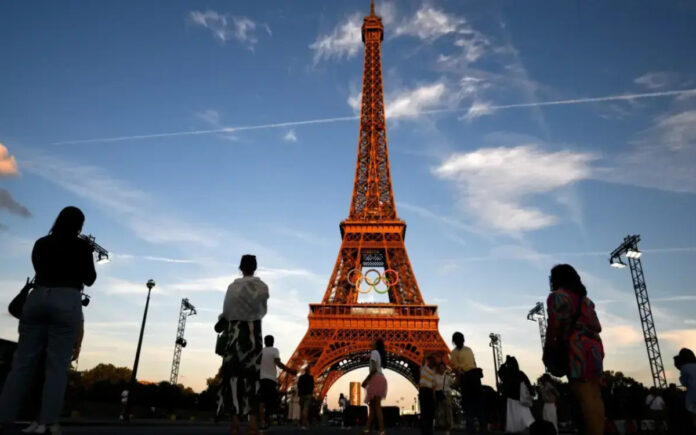Paris: With medals crafted from iron salvaged from Eiffel Tower refurbishments and stadium seating made of recycled plastic, Paris 2024 aspires to be the most environmentally conscious Olympics ever. The urgency for sustainable action is underscored by scientists who warn that the intense heat linked to man-made carbon emissions poses a growing risk to competitors and the broader public.
Paris 2024 has committed to halving its carbon emissions compared to the averages seen during the London and Rio Summer Games. Here’s a look at how the Games aim to achieve this ambitious goal:
Construction and Infrastructure
Olympic stadiums from previous Games, like Rio’s Olympic Aquatic Centre, often symbolize post-event extravagance when they fall into disuse. Paris 2024 is tackling this by minimizing new construction. Most venues will utilize existing or temporary sites, often incorporating the city’s landmarks as settings.
Organizers have pledged to replace concrete with low-carbon building materials, including sustainably sourced wood, aiming to cut the Olympic Village’s emissions by 30% compared to conventional projects. Permanent infrastructure accounted for 73% of the estimated 467,000 metric tons of carbon emissions from the Olympic Games between 2018 and 2023. Additionally, 11,000 seats in the two purpose-built arenas for Paris 2024 are made from recycled plastic.
Transportation
Transport is another major source of emissions for the Games. Organizers plan to use low-carbon vehicles to transport athletes and officials, and all venues will be accessible by bike, foot, or public transport. However, Paris 2024 has not directly addressed the emissions from spectators traveling to the Games. For comparison, emissions from spectator travel constituted nearly a third (28%) of the 3.3 million metric tons emitted during the London 2012 Games.
Also Read | France’s Train Network Disrupted by Arson Attacks Ahead of Olympic Opening Ceremony
Renewable Energy
Paris 2024 aims to power its venues using renewable energy from the grid, rather than relying on diesel generators. The Aquatics Centre and Olympic Village feature 5,000 square meters of solar panels on their roofs, and a 400 square meter floating solar farm has been established on the River Seine. Additionally, the Olympic Village utilizes a cooling system that draws water from underground instead of using air conditioning.
State-owned utility EDF will provide guarantees of origin to link the energy used by the Games to six wind and two solar production sites in France.
Also Read | PM Modi Accuses Pakistan of Using “Terrorism” to Stay Relevant
Carbon Offsetting
To offset some of the unavoidable emissions, particularly from spectator air travel, Paris 2024 has purchased 1.3 million carbon credits. Each credit represents one ton of emissions reduced or removed elsewhere, through projects that protect biodiversity in Kenya and Guatemala and improve access to clean cooking in Kenya, Nigeria, and the Democratic Republic of Congo.
Organizers are also investing 600,000 euros ($651,720) in four forestry projects in France to sequester 14,500 tons of greenhouse gases. While carbon credits can channel funding to climate-friendly initiatives, some projects have faced scrutiny over the accuracy of their claimed benefits.
Initially positioned as the first climate-positive Games, Paris 2024 has since revised its stance. The focus has shifted to reducing its climate impact and supporting climate projects, rather than claiming to offset more emissions than it generates.



